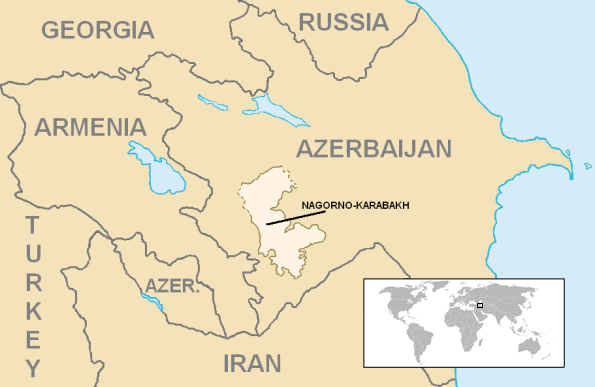Ecclesiastical History These volumes set a modern standard for translations into English of medieval Armenian historical texts. [...] One can only hope that the Thompson and Howard-Johnston team will collaborate again on translation and commentary, and that other teams will employ the same thoroughness and clarity when providing modern translations of medieval historical texts from any language tradition.
Speculum Perhaps the most extensive contemporary account of the seventh century, The Armenian History Attributed to Sebeos is without peer in its chronological coverage and its author's remarkably broad geographical interests. [...] This work should become essential reading for both specialists and non-specialists with an interest in the period.
Comitatus
show more
Sebeos (Armenian: Սեբեոս) was a 7th-century Armenianbishop and historian.
Mar 29, 2009 Sebeos' History of Armenia. 7th century History of Armenia, describing the tug of war by Byzantium and Iran for control of Armenia. The last chapters describe the Arab invasion. Translated from Classical Armenian. Zipped HTML files or pdf available.

Little is known about the author, though a signature on the resolution of the Ecclesiastical Council of Dvin in 645 reads 'Bishop Sebeos of Bagratunis.' His writings are valuable as one of the few intact surviving sources that chronicle sixth century Armenia and its surrounding territories.[1] The history of Sebeos contains detailed descriptions from the period of Sassanid supremacy in Armenia up to the Islamic conquest in 661. His history was published for the first time in 1851 in Istanbul.[2]
Writings[edit]
To him has been attributed the A History of Heraclius, chronicling events from the end of the fifth century to 661.[3] The first section begins with the mythical foundation of Armenia with the Legend of Hyke and Bel, moving to contemporary history with the ascent of Vardan II Mamikonian in 570. From there, he relates the struggles and alliances between Persia and Byzantium.
The second section narrates the ascent of a new political and military force, the Ishmaelites (i.e. Arabs).
This section describes how Mahmed first established a community comprising Ishmaelites and Jews based on their common descent from Abraham; the Arabs via Ishmael, and the Jews via Isaac.[4] From there, the Ishmaelites made dramatic territorial gains, including their victory over the Sassanian dynasty, and the narrative ends with the division of the Ishmaelite armies and the beginnings of the First Fitna. He relates these developments to Armenia.
References[edit]
- ^Hacikyan, Agop; Basmanjian, Bagriel; Franchuk, Edward; Ouzounian, Nourhan (2002). The Heritage of Armenian Literature Volume II. Detroit, Michigan: Wayne State University Press. p. 82. ISBN0-8143-3023-1. Retrieved 13 March 2015.
- ^Hacikyan, Jack (2002). The Heritage of Armenian Literature: From the sixth to the Eighteenth Century. p. 81. ISBN0814330231.
- ^Ararat, Volume 27. Armenian General Benevolent Union. p. 16. to him
- ^Howard-Johnston, James (1999-11-01). The Armenian History Attributed to Sebeos. Liverpool University Press. pp. li. ISBN0-85323-564-3.
Literature[edit]
- The Armenian History attributed to Sebeos, translated, with Notes, by R. W. Thomson, historical Commentary by J. Howard-Johnston, Assistance from T. Greenwood (Translated Texts for Historians), 2 Volumes, Liverpool 1999.
- T. Greenwood, 'Sasanian Echoes and Apocalyptic Expectations: A Re-Evaluation of the Armenian History attributed to Sebeos', Le Muséon 115, Fasc. 1—2 (2002) 323—397.
External links[edit]
The Armenian History Attributed To Sebeos Pdf Creator Word

- English translation of the History - mirror if main site unavailable
- Sebeos' History, Russian translation, S.Petersburg 1862.
Top News
- Craigslist Cash Cow Pdf To Word
- Download Song Going Under Evanescence Mp3
- Ets3 Professional Keygen Music
- Bsria Rules Of Thumb 5th Edition Pdf
- Driver Bluetooth Acer Extensa 5635z Bluetooth
- Giardiniblog Wii Backup Manager Iso
- Zaxwerks Proanimator Crack
- Abbyy Finereader 12 Serial Number Cracked
- Free Download Font Thai Psp Go
- How To Install A Language Pack On Rosetta Stone
- Contoh Program Oop Php Tutorial Pdf
- Dfx Audio Enhancer Free Download For Windows 7 32bit
- How To Install Solid Subframe Bushings S13 Rocket
- Empire Deluxe Scenarios Download
- Bert Is Cheating On Ernie Kovacs
- Gary Grigsby S War In The East Serial Number
- Raghupati Raghav Raja Ram Bhajan Instrumental Mp3 Download
- Download Software Untuk Merubah Video Ke 3gp